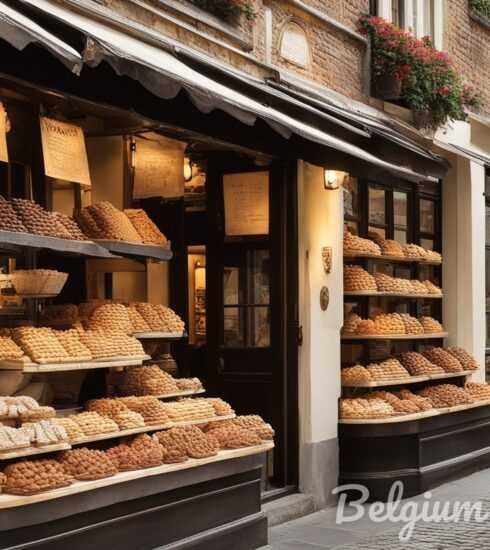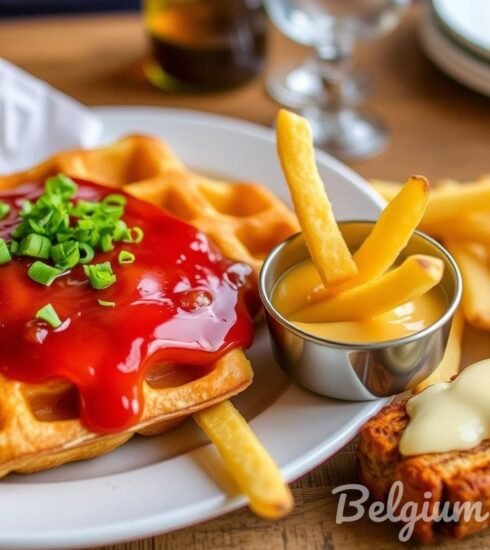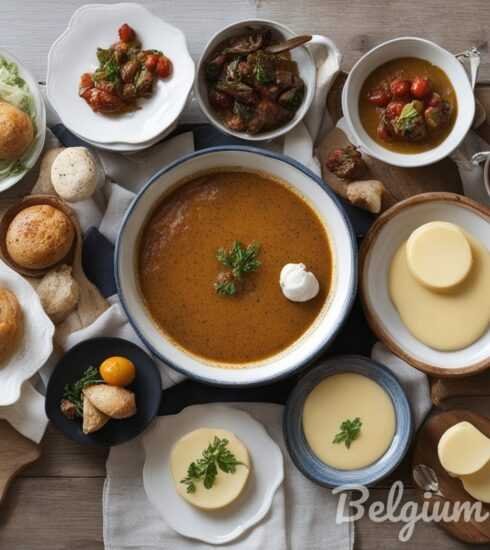Belgian Flavor Revival: Uncovering Belgiums Culinary Time Capsule of Lost Delights
Belgium’s Culinary Time Capsule: Rediscovering Forgotten Flavors and Enduring Traditions
Belgium has long been celebrated for its exquisite cuisine, a rich tapestry woven from the threads of history, culture, and regional diversity. However, hidden within Belgium’s culinary history are forgotten flavors and dishes yearning for revival. As food enthusiasts and culinary adventurers seek to experience the authentic essence of Belgium, the concept of the Belgian flavor revival emerges as a beacon of hope, guiding us to rediscover these lost traditions and flavors. In this exploration, we will delve deep into some of the most iconic Belgian dishes, traditional practices, and innovative movements that seek to rejuvenate Belgium’s culinary heritage.
The Roots of Belgian Culinary Heritage
To understand the significance of the Belgian flavor revival, one must first appreciate the diverse influences that contribute to Belgium’s culinary landscape. With its rich history influenced by French, Dutch, and German cuisines, Belgian food reflects a unique blend of flavors and techniques. Key regional culinary traditions include:
- Flemish Cuisine: Known for its hearty dishes like waterzooi (a creamy stew), Flemish beef stew, and carbonades flamandes.
- Walloon Cuisine: With a focus on rich sauces, game meats, and artisanal cheeses like Boulette de Liège.
- Brussels’ Gastronomy: Featuring delicate pastries and the famous Brussels sprouts, a staple among locals.
Furthermore, Belgium is recognized globally for its contributions to sweets and desserts, particularly chocolates and waffles, and its brewing traditions that span centuries, producing some of the finest beers in the world.
Forgotten Flavors: Dishes Lost to Time
As culinary trends evolve and modern tastes change, certain traditional dishes have gradually faded from the collective memory of the Belgian populace. Among these forgotten flavors, we find:
- Guggenmusik: Once a beloved dish during carnivals, this fried pastry is now a rare find.
- Pikant: A spicy and savory stew that was commonly served in rural households, now rarely made.
- Gronde: A local variation of soup, often made only during specific seasons, seen by many as a culinary relic.

These dishes exemplify the need for a revival—an opportunity to reconnect with cultural identity through food. Rediscovering these recipes can deepen our understanding of Belgian heritage and inspire generations of cooks and food lovers alike.
The Role of Culinary Tours in Revival
One effective way to experience the Belgian flavor revival is through culinary tours that spotlight the forgotten flavors and enduring traditions of the country. Various tour companies offer immersive experiences that allow participants to:
- Visit local artisan producers and learn about traditional methods of cheese-making, chocolate production, and brewing.
- Participate in hands-on cooking classes that revive ancient recipes.
- Enjoy tastings that feature both well-known classics and forgotten delicacies.
For example, organizations like Flavor Belgium provide tailored tours that explore regional specialties while focusing on authenticity and sustainable practices. Such experiences cultivate a sense of community among culinary enthusiasts, connecting them to the very essence of Belgian culinary tradition.
Artisanal Resurgence: Local Producers Leading the Way
At the heart of the Belgian flavor revival is a movement of local artisans dedicated to preserving and promoting traditional crafts. Many Belgian producers are reclaiming their heritage by reviving forgotten recipes and ingredients. Some examples include:
- Traditional Brewers: Craft brewers are not only focusing on well-known recipes but are experimenting with ancient techniques such as open fermentation and spontaneous fermentation, resulting in unique flavor profiles.
- Cheese Makers: Artisanal cheese makers are embracing historical recipes and rare cheese varieties to reignite interest among consumers.
- Farmers’ Markets: Local food markets are showcasing heirloom produce and forgotten grains, fueling an interest in sustainable agriculture and biodiversity.
Such initiatives serve as a foundation for the Belgian flavor revival, urging consumers to appreciate the stories and processes behind their foods while fostering collaboration between producers and chefs.

Culinary Events: Festivals Celebrating Tradition
Festivals play a pivotal role in the Belgian flavor revival by uniting communities and celebrating culinary heritage. Events such as:
- Fête de la Gastronomie: An annual celebration of French and Belgian gastronomy, featuring local dishes and culinary demonstrations.
- Brussels Beer Weekend: A festival dedicated to the rich brewing tradition of Brussels, offering tastings and masterclasses with brewers.
- Vegetable Festivals: Held in various provinces, these festivals celebrate local produce, heirloom varieties, and immersive experiences focused on cooking with seasonal ingredients.
Such events not only entertain but also educate the public about the importance of food heritage and the importance of keeping traditional flavors alive.
The Influence of Modern Chefs
Modern chefs are embracing the Belgian flavor revival movement by reinterpreting traditional dishes, incorporating forgotten ingredients, and emphasizing local sourcing. Renowned chefs like:
- Peter Goossens: Known for his Michelin-starred restaurant, he focuses on authentic Belgian flavors and local ingredients.
- Juan Amador: His innovative approach to traditional dishes pushes the boundaries of Belgian cuisine while honoring its roots.
- Yves Mattagne: Chef Yves embraces traditional flavors, crafting menus that showcase seasonal and local ingredients.
Through their culinary practices, these chefs highlight the timeless nature of Belgian cuisine and encourage the connection to the past while inviting new interpretations.
Consumer Trends and the Importance of Local Ingredients

The growing interest in local and sustainable dining is a significant factor contributing to the Belgian flavor revival. Consumers are looking for transparency in their food sources and a deeper connection to the ingredients they consume. Research shows that:
- More than 75% of consumers prefer to purchase locally sourced ingredients.
- Farm-to-table establishments have seen a 20% growth in the past five years across Belgium.
- The resurgence of traditional cooking practices among home cooks, such as fermentation and preserving, highlights a renewed interest in heritage cooking.
As awareness increases, restaurants and culinary leaders are leaning into this trend, crafting menus that not only celebrate Belgian flavors but also reflect the richness of local ecosystems.
Digital Revivals: Online Communities and Resources
In the digital age, online communities are playing a crucial role in the Belgian flavor revival. Food bloggers, social media influencers, and culinary educators are sharing forgotten recipes and traditions through accessible platforms. Websites such as Belgium Food provide comprehensive guides to traditional dishes, ingredients, and cooking techniques, ensuring that these flavors are not lost to time.
Furthermore, social media platforms allow food enthusiasts to connect, exchange recipes, and celebrate their culinary heritage together. Through hashtags like #BelgianCooking and #FlavorRevival, individuals are fostering community and sharing their culinary journeys.
A Future Built on Tradition
As more people turn to local dining experiences and traditional cooking practices, the Belgian flavor revival holds immense potential to reshape Belgium’s culinary landscape. By engaging with their culinary heritage, Belgians can create a more sustainable food culture that honors past traditions while innovating for the future.
In embracing forgotten flavors and soulful recipes, Belgium stands at the forefront of a culinary renaissance that highlights its rich history and cultural identity. Through focused efforts on rediscovery, community engagement, and sustainability, traditional Belgian cuisine can continue to thrive for generations to come.
As we savor these culinary delights and embark on this journey of tapping into the heart of Belgium’s flavors, let us celebrate the enduring traditions and embrace the revival of the glorious foods that once defined this vibrant country.






